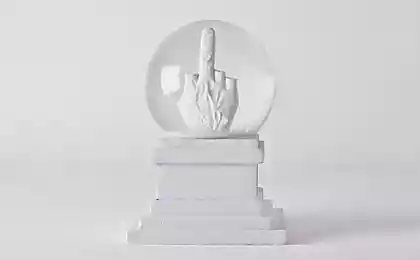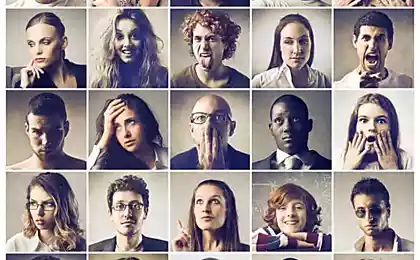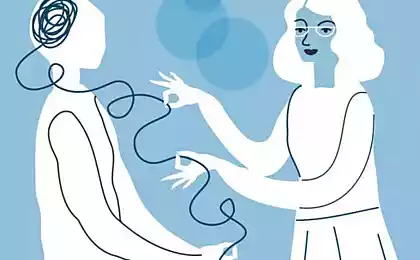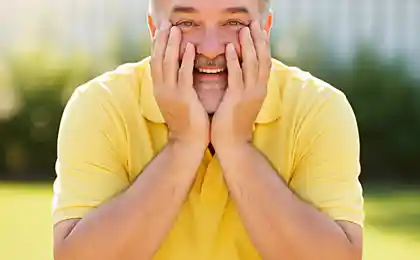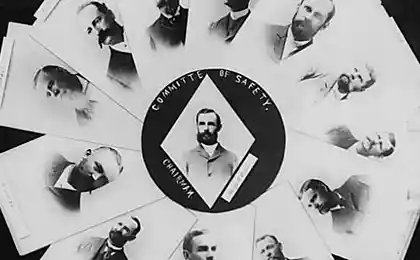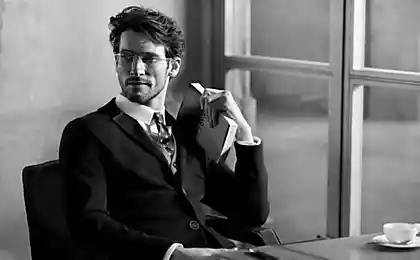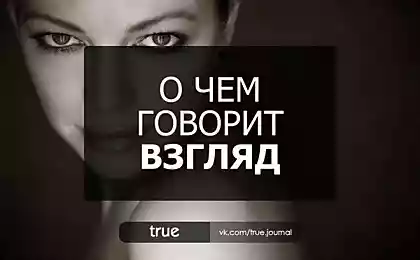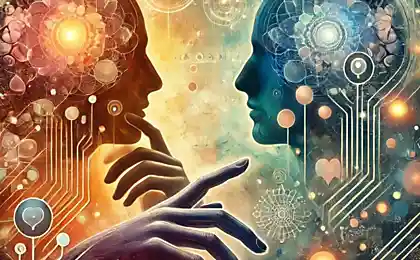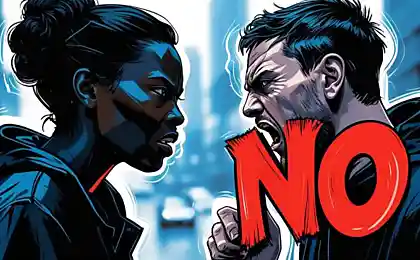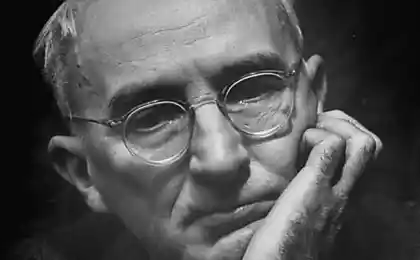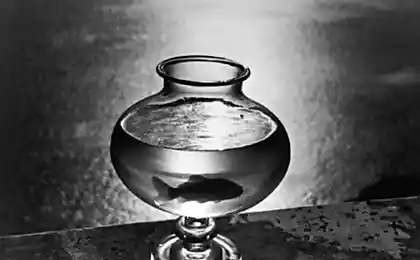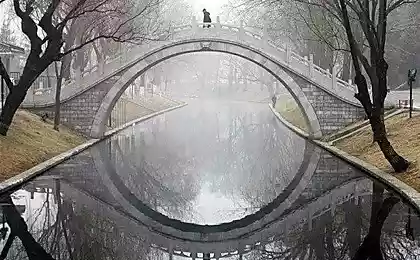789
7 Secrets deciphering facial expressions of your interlocutor
The main human emotions have a clear characteristic priznaki
Knowing how to read and interpret facial expressions - an important part of understanding the so-called non-verbal signals that are crucial in communication. A study of seven basic emotions and facial expressions corresponding to these emotions can help you to read others, to understand what they feel and to respond effectively.

In the expression of joy it involved both the upper and lower part of the face. In addition to lifting and stretching the corners of the sides of the mouth (i.e., a smile), expression of joy includes reducing of the muscles around the eyes, thus causing "crow's feet", and the movement of the facial muscles under the eyes, resulting in creases may occur. The jaws wide open, teeth open, there is no tension. True smile - always anatomically a clear and points to a genuine feeling of happiness.
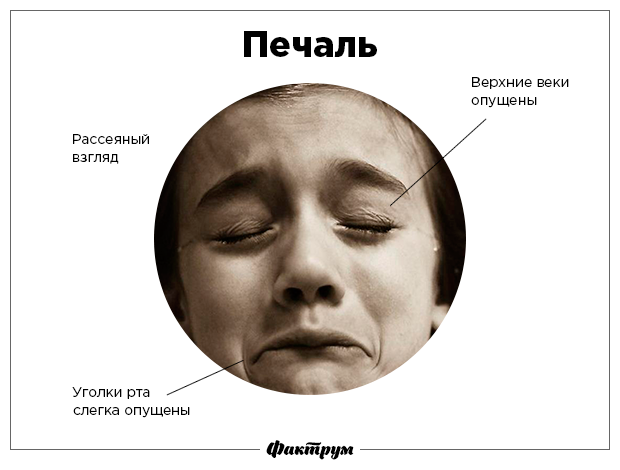
The expression of sadness is hard to simulate because there eyebrows slightly raised up, and the corners of her mouth are lowered, which is associated with sadness. Very few people may choose to slightly raise eyebrows, but this barely noticeable rise seen anyone who feels true sadness. When someone is sad, as there is a slight lowering of the upper eyelids, a faraway look and a slight shift downwards over the lips and lower jaw.
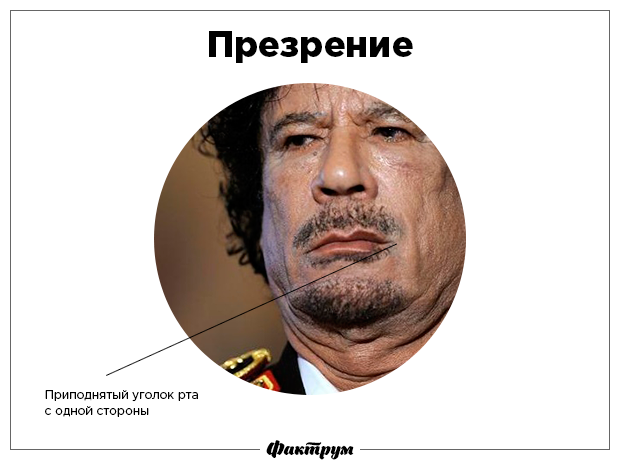
The expression of contempt is unique in that it requires asymmetry. Most emotional expressions can be bilateral, but contempt - the only emotion that is expressed only one side of the face, in the form of raised and pull the corner of the lips.
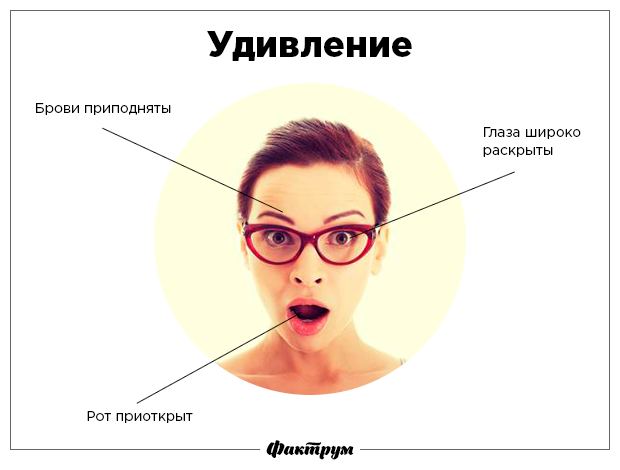
An expression of surprise - the shortest of all expressions. It usually involves raised eyebrows, eyes dilated, and open mouth. An expression of surprise quickly dissolves into anger, joy or in sorrow.
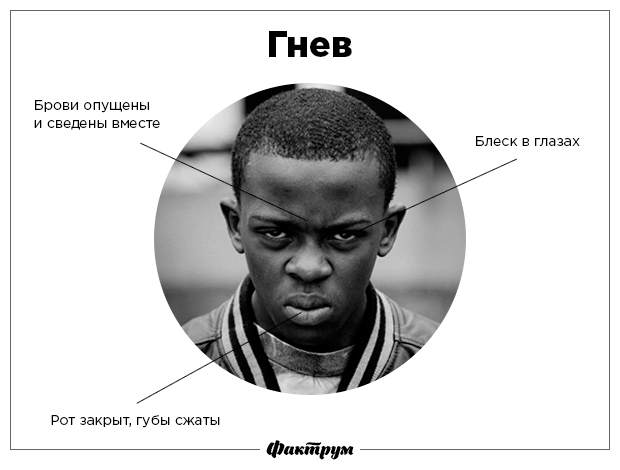
Anger can range from mild irritation to outright anger. Although there are different degrees of intensity of the anger, all accompanied by the same expression. When angry, we often see drooping eyebrows and bright eyes. Lips pressed tight, pulled back the upper eyelids, lower eyelids pulled up.
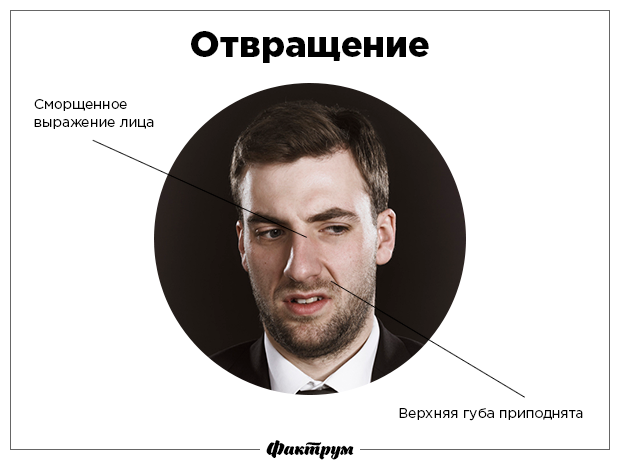
This is a powerful expression of disgust generated to some object or a person, or even thought about something repulsive. The nose is usually wrinkled and upper lip - rises.
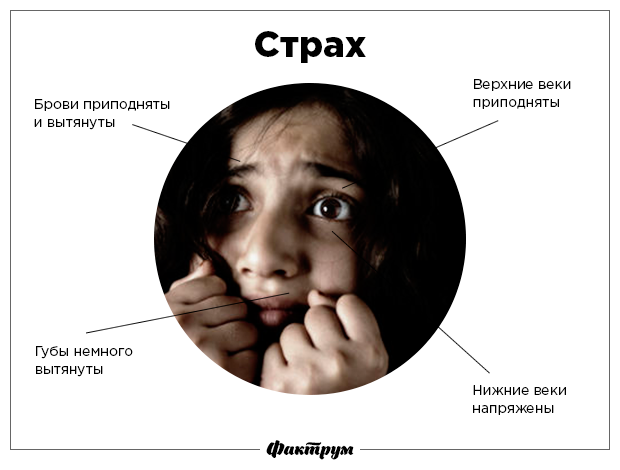
The expression of fear has been created to serve as a warning signal in dangerous situations. When we experience fear, our eyebrows rise and shrink, tighten lower eyelids and lips slightly stretched horizontally.
via factroom.ru

Knowing how to read and interpret facial expressions - an important part of understanding the so-called non-verbal signals that are crucial in communication. A study of seven basic emotions and facial expressions corresponding to these emotions can help you to read others, to understand what they feel and to respond effectively.

In the expression of joy it involved both the upper and lower part of the face. In addition to lifting and stretching the corners of the sides of the mouth (i.e., a smile), expression of joy includes reducing of the muscles around the eyes, thus causing "crow's feet", and the movement of the facial muscles under the eyes, resulting in creases may occur. The jaws wide open, teeth open, there is no tension. True smile - always anatomically a clear and points to a genuine feeling of happiness.

The expression of sadness is hard to simulate because there eyebrows slightly raised up, and the corners of her mouth are lowered, which is associated with sadness. Very few people may choose to slightly raise eyebrows, but this barely noticeable rise seen anyone who feels true sadness. When someone is sad, as there is a slight lowering of the upper eyelids, a faraway look and a slight shift downwards over the lips and lower jaw.

The expression of contempt is unique in that it requires asymmetry. Most emotional expressions can be bilateral, but contempt - the only emotion that is expressed only one side of the face, in the form of raised and pull the corner of the lips.

An expression of surprise - the shortest of all expressions. It usually involves raised eyebrows, eyes dilated, and open mouth. An expression of surprise quickly dissolves into anger, joy or in sorrow.

Anger can range from mild irritation to outright anger. Although there are different degrees of intensity of the anger, all accompanied by the same expression. When angry, we often see drooping eyebrows and bright eyes. Lips pressed tight, pulled back the upper eyelids, lower eyelids pulled up.

This is a powerful expression of disgust generated to some object or a person, or even thought about something repulsive. The nose is usually wrinkled and upper lip - rises.

The expression of fear has been created to serve as a warning signal in dangerous situations. When we experience fear, our eyebrows rise and shrink, tighten lower eyelids and lips slightly stretched horizontally.
via factroom.ru
Russia has no opportunity for human exploration of the Moon
These gloves can be incredible to climb walls
